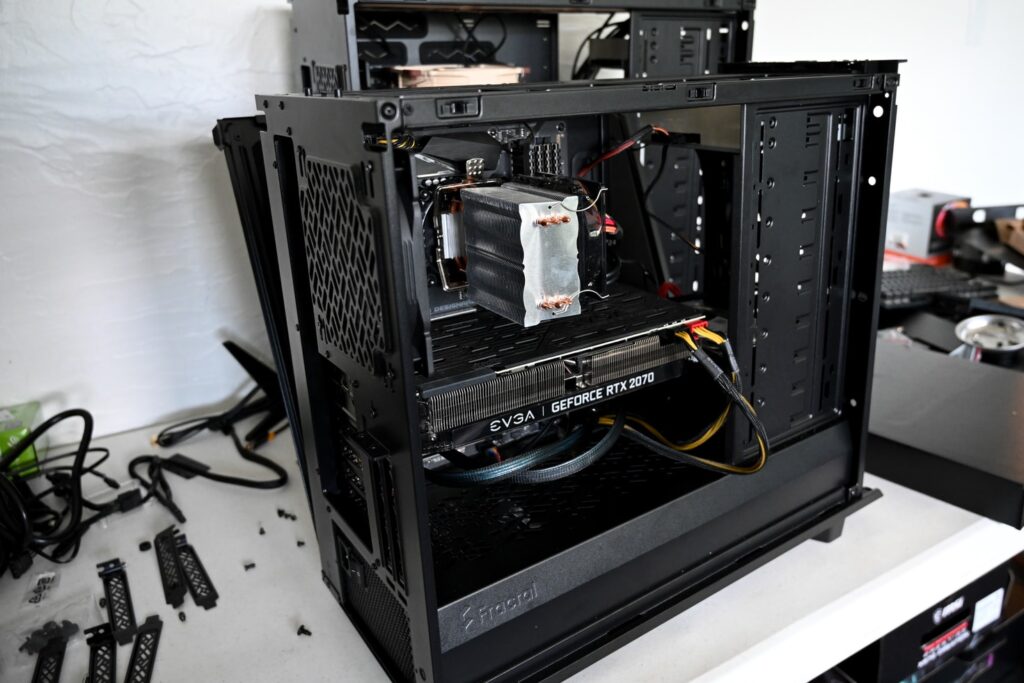
We live now in a digital age in which, for many people, having a working computer and a reliable internet connection are not optional. Whether it’s for business, personal arrangements, or just keeping up-to-date with entertainments and news, we rely on our computers.
It’s also the case though, that the more tech you have, the more chance there is that something will go wrong, and even though we all use computers, we don’t always have the expertise to identify what exactly is causing a problem, and how to go about fixing it. That in mind, let’s consider some of the most common things that can go wrong with your computer, and what you can do about it.
Hard Drive Issues
Your hard drive is critical, as it’s where so much of your digital content is stored, including the operating system, documents, and photos and videos. If something goes wrong here, then you’ll have difficulty doing much with your computer at all, and might need to make use of a recovery service, who can get back whatever data was stored on your hard drive.
It’s important to avoid losing all your valuable content by investing in data backup. Make sure to schedule this regularly so that you’re always covered. You can backup your data to an external, secondary hard drive very easily, and the hardware is becoming cheaper and cheaper.
Alternatively, there are cloud-based services that can take care of storing your content. There are lots of bargains and special deals to be found if you shop around, and it’s never been easier to make sure all your data is backed up and secure regardless of your level of technical know-how.
Overheated PC
If your PC frequently overheats, it can lead to all kinds of problems. You might simply find that your computer behaves erratically and slows down. An over-heated PC might also be prone to suddenly shutting down completely, and you might also notice that it becomes very noisy while operating. Over the long-term, an overheating problem can cause permanent damage to a PC’s components, creating further problems.
If your PC is overheating, there may be a problem with the fans. Make sure to regularly clean your PC internally, ensuring in particular that fans are kept spotless and free of dust, which can build up quickly. Don’t smoke near your PC, as the smoke can enter the computer, hindering its performance and preventing fans from operating smoothly.
Also, make sure nothing external is physically blocking the vents on your PC. The more easily cool air can circulate around and through the PC, the cooler it will remain. It may also be the case that your PC’s cooling system simply isn’t up to the job, in which case, look at upgrading the fans or using a cooling pad. Be aware of your PC’s limitations and don’t use it for anything too heavy duty.
No Wi-Fi Connection
If your PC isn’t connecting to the internet, then the first thing you can try is just turning it off and on again. Very often this will fix the problem, but if not then the next thing is to go into your network and internet settings and make sure everything is configured properly. Nowadays, most people use Wi-Fi but don’t give much thought to the positioning of their router. If you’re having connection problems, it may be as simple as making sure that the signal is reaching from router to PC without any obstructions.
If possible, position your router so that there is a direct line of sight from PC to router. Try putting it in the middle of a room rather than off to the side, and in an elevated place, and make sure there are no large objects in the way. If you’re still having problems then you might need to buy a WiFi booster, which can extend the signal and fill in any dead spots around your room. These can be bought at very reasonable prices.
And if you need an immediate fix that will also be more robust and speed up the connection, then forget about wi-fi and use a cable to physically hook up your internet connection. Sometimes the old-fashioned solutions work best!
PC Crashes Straight Away
Sometimes a PC might crash before it even loads the operating system, leaving you wondering what you can do to fix it. In this case, the problem might be the hard disk, as discussed earlier. As the hard disk contains the OS, when it’s out of order your computer can’t get started. Another problem though, might be that the RAM is corrupted. In this case, if you have more than one RAM slot, then test each one by removing each stick of RAM in turn and seeing if the PC powers up with the others in place. If you identify that you have a problem with faulty RAM, then you’ll have to replace the damaged component, but again, this can be done cheaply and easily.
In all cases, prevention and preparation are best, so always make sure you keep your PC clean and your data backed up.